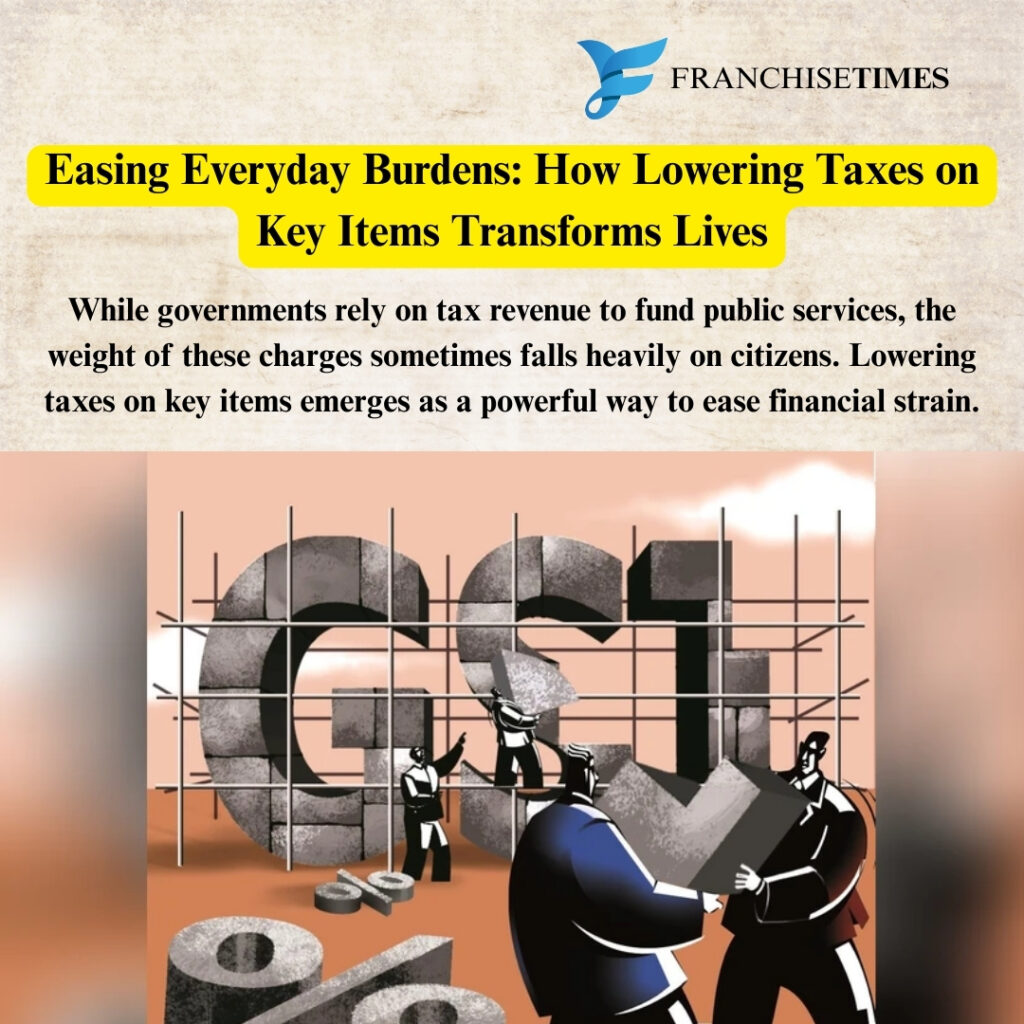Easing Everyday Burdens: How Lowering Taxes on Key Items Transforms Lives
Taxes influence nearly every part of our daily lives. From the food we eat to the clothes we wear, each essential item often carries a tax burden. While governments rely on tax revenue to fund public services, the weight of these charges sometimes falls heavily on citizens. Lower Taxes Improve Lives emerges as a powerful way to ease financial strain, stimulate economic growth, and uplift communities.

In this blog, we’ll explore the importance of reducing taxes on essential goods, how it benefits households, why businesses gain strength, and the broader impact on national economies. Along the way, we’ll highlight examples, insights, and real-world outcomes that demonstrate why this policy deserves attention.
1. The True Cost of Essential Goods
When families purchase basic necessities, they rarely consider the layers of taxes hidden in the final price. However, those costs quickly add up. Key items such as food, healthcare products, fuel, and educational materials are not luxuries. They are daily essentials. Yet, in many regions, they face heavy taxation.
Imagine a middle-class household that spends most of its income on food and healthcare. Even a small percentage of tax increases their monthly burden. Now consider low-income families. For them, taxes on essential items can become the difference between affordability and financial hardship.
By Lower Taxes Improve Lives, governments can immediately reduce living costs. This creates a ripple effect where people spend more on education, savings, or better nutrition instead of struggling to cover basic bills.
Furthermore, this approach improves fairness. While luxury goods can carry higher taxes without affecting survival, basic items should remain affordable to protect vulnerable groups. Transitioning toward reduced taxes for essentials reflects a society’s commitment to equality and welfare.
2. Why Lowering Taxes Boosts Consumer Confidence
Consumer confidence drives economic growth. When people feel secure about their purchasing power, they spend more freely. On the other hand, rising prices triggered by taxes often make individuals cautious about spending. This hesitation slows growth and weakens markets.
Lowering taxes on key items builds trust. People see immediate relief in their everyday expenses. For example, reducing taxes on staple foods directly decreases grocery bills. As a result, households have more disposable income to use elsewhere. This spending supports local businesses, increases demand, and eventually strengthens job creation.
Another factor is psychological. Citizens often feel frustrated when essential goods face steep taxation. They perceive it as unfair. When governments introduce tax cuts on essentials, the gesture fosters goodwill and strengthens trust in governance. Positive sentiment plays a crucial role in stabilizing economies, especially during uncertain times.
Moreover, lowering taxes on healthcare items or medicines is more than financial relief. It ensures accessibility. Affordable healthcare boosts productivity because healthier populations contribute more actively to the workforce. This illustrates how tax reforms directly shape the strength of a nation.
3. The Business Perspective: Growth Through Fair Taxation
Businesses thrive when consumers spend more, but the story doesn’t end there. Lowering taxes on key items benefits companies in multiple ways.
First, lower taxes encourage higher sales volumes. For instance, when taxes on clothing or electronics decrease, demand rises. Retailers see increased footfall, manufacturers gain higher production orders, and the supply chain becomes more active. This activity results in more employment opportunities and economic expansion.
Second, businesses themselves often purchase key items like raw materials, fuel, or machinery that carry heavy taxes. Reducing these taxes lowers operational costs. In turn, businesses can offer competitive prices without compromising profits. This not only supports domestic growth but also makes exports stronger on the global market.
Additionally, small and medium enterprises (SMEs) gain stability when tax policies ease burdens. SMEs are often the backbone of national economies, and tax relief gives them breathing space to expand operations, invest in technology, and improve worker wages.
Ultimately, Lower Taxes Improve Lives creates a win-win cycle. Consumers benefit from affordable prices, while businesses gain sustainable growth. Together, this collaboration builds a stronger economic foundation.
4. Global Examples of Tax Reduction Success
Several countries have implemented policies that reduce taxes on essential goods with outstanding results. These examples provide inspiration for regions still debating the value of such reforms.
- India: Under the Goods and Services Tax (GST) regime, essentials like food grains, milk, and books were placed under zero or minimal tax brackets. This made them more accessible to millions while maintaining higher taxes for luxury goods.
- European Union: Many EU countries apply reduced Value Added Tax (VAT) rates for items such as medicines, newspapers, and children’s clothing. This policy reflects an effort to support families while keeping necessities affordable.
- United States: Some states exempt groceries and prescription medicines from sales taxes altogether. This ensures that families do not bear extra financial strain on critical purchases.
These examples prove that lowering taxes on key items is not just theoretical. It works in practice. When applied thoughtfully, it balances fiscal responsibility with social welfare.
Governments also gain long-term advantages. Higher consumer spending boosts tax revenue indirectly, even if direct taxes on essentials decrease. This dynamic demonstrates that tax reduction doesn’t always mean financial loss for the state. Instead, it can be a strategic investment.
5. Charting the Path Ahead: Policies for Sustainable Reform
Lowering taxes on key items is not a one-time action. It requires consistent policy design, monitoring, and adjustment to ensure long-term benefits. For sustainable reform, governments can adopt a few strategies.
- Targeted Reduction: Instead of lowering taxes across the board, policymakers should identify items that impact the majority of households. Food, healthcare, fuel, and education materials should top the list.
- Progressive Taxation: Luxury items can carry higher taxes to balance government revenue. This ensures the state does not face shortages while ordinary citizens enjoy relief.
- Regular Review Mechanisms: Economic conditions change. Tax policies should evolve too. Periodic reviews ensure that essential goods remain affordable without compromising fiscal stability.
- Public Awareness Campaigns: When tax reforms occur, people must understand the changes. Clear communication fosters transparency, builds trust, and enhances the reform’s effectiveness.
- Support for Businesses: Governments can pair tax cuts with incentives for businesses to reinvest savings into job creation, research, and expansion. This multiplies the benefits of lower taxes.
By adopting these measures, governments create a cycle of fairness, growth, and stability. Most importantly, they reinforce the principle that essential goods should remain within everyone’s reach.
Conclusion
The debate on taxation often focuses on revenue generation, but the real question should be: how do these taxes impact everyday life? Lower Taxes Improve Lives is more than a fiscal decision—it’s a human-centered policy. It eases household burdens, builds consumer confidence, strengthens businesses, and promotes social equality.
Examples worldwide prove that reducing taxes on essentials works in practice, not just in theory. When governments align tax policies with social priorities, they set the stage for sustainable development and inclusive growth.
As economies face global challenges, the path forward must prioritize affordability, accessibility, and fairness. By lowering taxes on essentials, we create not only stronger economies but also stronger societies.
